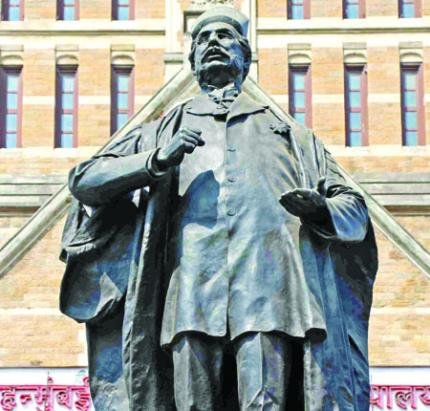How Architecture Of Udvada Evolved To Protect The Iranshah
The Parsis’ sacred fire, the Iranshah, had an arduous journey before it settled in Udvada. Legend goes that it was consecrated in Sanjan from 16 different sources including a burning corpse and lightning. Many centuries later, Sanjan was besieged by Muslim invaders, and the fire was removed to the Bahrot Caves in Maharashtra. It remained there for over a decade, before being transferred to Gujarat’s Vansda forest for 14 years. It was then taken to Navsari where it remained for three centuries before being shuttled between Surat, Navsari and Valsad. It finally reached Udvada in 1742.
Considering this history of turmoil, it’s little wonder that the architecture of Udvada evolved to protect this holy flame. In a heritage walk during the Iranshah Udvada Utsav, an architect explained how keeping the Iranshah safe from invaders had fashioned the area’s typography. “The buildings around the atash behram are of the same height to camouflage it,” she said. And, the lanes are meandering with nodes or open spaces at regular intervals to retain the element of surprise.
As the Parsis settled in Diu —a Portuguese stronghold—for many years, Udvada’s architecture boasts many Portuguese elements like decorative cornices, elaborately-carved grilles and cantilevered balconies. One bungalow even has a Portuguese-style clock painted on a side wall because the residents probably couldn’t afford a real one.
Another historic relic in the coastal village is a camel tank with a Portuguese inscription dating back to 1714. “Only an animal, the size of a camel, could reach in to drink water,” said architect Delnaaz Kharadi, one of the guides leading the heritage walk. This ruined tank gives credence to the theory that Udvada once housed the summer palace of the Mandvi king at Meriwadi, along with a grazing ground for his camels. Thus, the name could have evolved from ‘Unth Wada’ (camel site). Another theory is that it could be a derivative of the Sanskrit word “Udna-vaas” meaning “partly in sea water”.
Around the 16th century, the Mandvi king signed Udvada over to the Portuguese in a treaty. When the Parsis arrived in 1742, the Marathas had just defeated Maharana Durjansingh of Mandvi, the ruler of Dharampur. The Peshwas deputed the defeated king to fight the Portuguese and when he emerged victorious, his kingdom along with Udvada was returned as reward.
Sadly, Bathela House, which housed the Iranshah when it first arrived in Udvada, has long been razed. Redevelopment is just one of the many threats the town faces. Others include well water being contaminated due to seepage from badly-maintained septic tanks and coastal properties being lashed by the sea
Published on Times Of India





